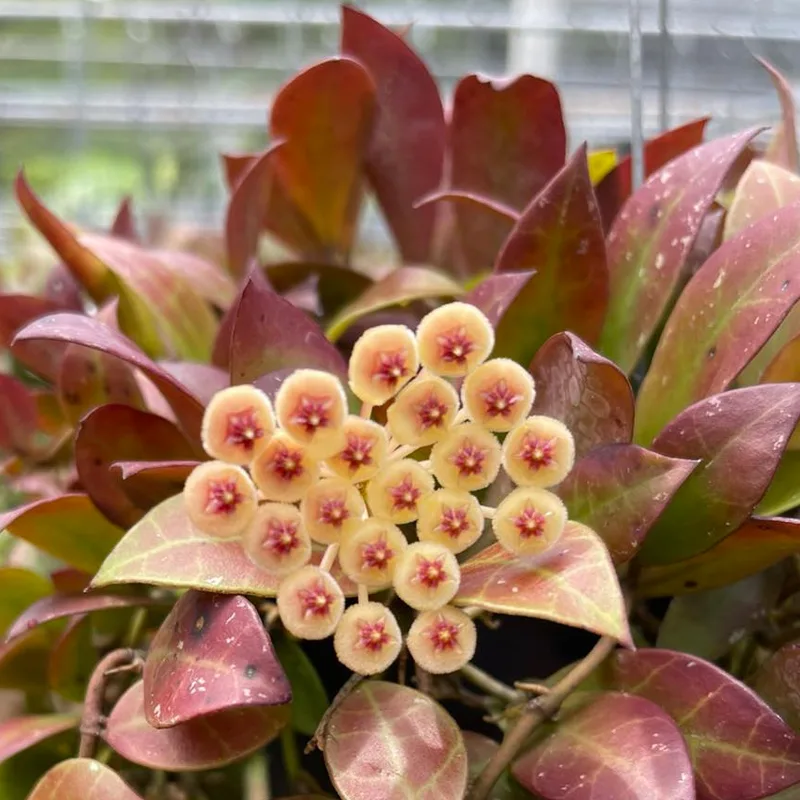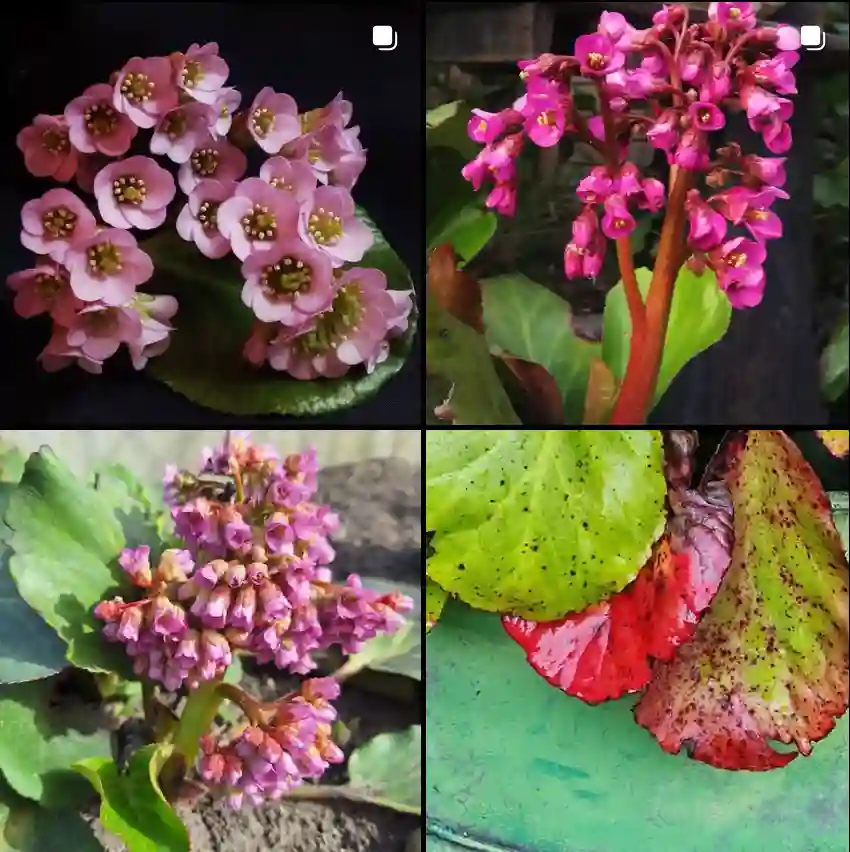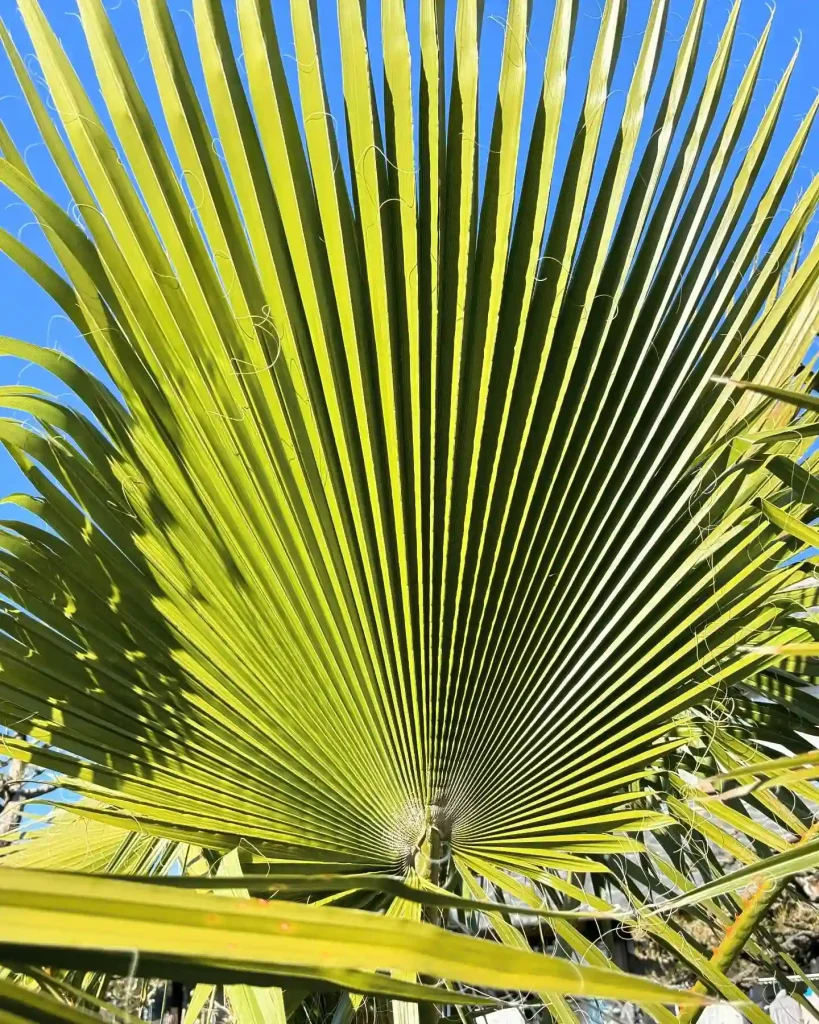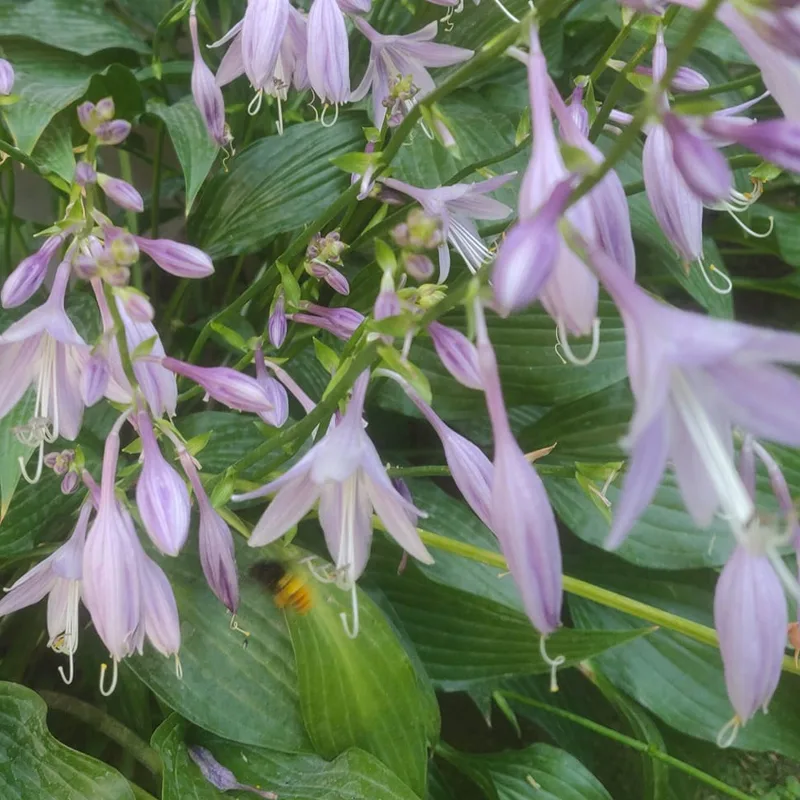1. Introduction to Philodendron Bipennifolium: The Horsehead Marvel
1.1. What is Philodendron bipennifolium?
The Philodendron bipennifolium is a unique and highly appealing species within the Philodendron genus, instantly recognizable by its exceptionally distinct leaf morphology. Its common names, ‘Horsehead Philodendron’ or ‘Fiddleleaf Philodendron’, accurately describe its deeply lobed and dissected leaves, which mature into a shape resembling a horse’s head or a violin. These intricate lobes give the foliage a unique, almost sculptural appearance, setting it apart from many other Philodendron species. Native to the humid tropical rainforests of Brazil, French Guiana, Venezuela, Colombia, Ecuador, and Peru, it is a vigorous climbing vine that brings an exotic and architectural touch to any indoor plant collection.
1.2. Reasons for its Appeal
Philodendron bipennifolium captivates plant enthusiasts for several compelling reasons:
- Extraordinary Leaf Shape: Its deeply lobed and dissected leaves are truly one-of-a-kind, offering an intricate and sophisticated aesthetic.
- Distinctive Appearance: The unique morphology provides a striking visual interest that stands out in any collection.
- Vigorous Climbing Habit: As a natural climber, it readily ascends moss poles or trellises, allowing for impressive vertical growth and leaf size.
- Relatively Easy Care: Despite its intricate appearance, it is generally considered an easy-to-care-for houseplant once its basic needs are met.
2. Origins and Distinguishing Characteristics
2.1. Native Habitat
Philodendron bipennifolium is indigenous to the tropical rainforests of South America, specifically found in Brazil, French Guiana, Venezuela, Colombia, Ecuador, and Peru. In its natural environment, it typically grows as a hemi-epiphyte, meaning it can start life in the soil and climb nearby trees, or establish itself as an epiphyte on tree branches. It thrives in warm, highly humid conditions with filtered or dappled light in the understory. It utilizes its aerial roots to cling tightly to surfaces and absorb moisture and nutrients from the humid air and decaying organic matter. Understanding these native conditions is crucial for replicating an ideal indoor growing environment.
2.2. Leaf Morphology and Growth Progression
The most defining characteristic of Philodendron bipennifolium is its complex leaf morphology. Juvenile leaves may start with a simpler shape, but as the plant matures and begins to climb, they quickly develop into their characteristic deeply lobed and dissected form. Each leaf is typically a vibrant, glossy green, with the lobes appearing quite slender and deeply cut, often creating the distinct “horsehead” or “fiddleleaf” shape. The leaves can grow quite large, sometimes up to 2 feet in length. Some varieties, like ‘Aurea’ (Golden Horsehead), have new leaves that start bright golden yellow and turn greenish-yellow.
2.3. Growth Habit and Rate
Philodendron bipennifolium is a vigorous climbing hemi-epiphyte. It produces strong aerial roots that readily attach to rough surfaces, allowing it to ascend trees or other structures in its natural environment. Indoors, providing a sturdy vertical support such as a moss pole, bamboo stake, or trellis is highly recommended. This encourages its natural climbing instinct and is crucial for the plant to produce larger, more mature leaves with well-defined lobes. Without support, it tends to sprawl or trail, resulting in smaller, less developed leaves. It exhibits a moderate to fast growth rate under optimal conditions, particularly during the warmer growing seasons. It can happily grow steadily and fill your indoor space with its lush greenery.
2.4. Toxicity
Like most other Philodendron species, Philodendron bipennifolium is considered toxic to pets (cats, dogs) and humans if ingested. It contains calcium oxalate crystals, which can cause irritation and swelling of the mouth, throat, and digestive tract, leading to discomfort, vomiting, and difficulty swallowing. It is advisable to keep this plant out of reach of pets and small children.
2.5. Comparison to Similar Philodendrons (Panduriforme, Tortum, Pedatum, Golden Dragon)
Philodendron bipennifolium is quite distinct due to its specific leaf lobing, but it can be confused with other deeply cut or unique leaf-shaped Philodendrons, and sometimes misidentified in cultivation.
- Philodendron bipennifolium: Characterized by deeply lobed leaves resembling a horse’s head or a violin (fiddleleaf). It is a vigorous climbing Philodendron. Its leaves are typically glossy green, though yellow forms (‘Aurea’) exist.
- Philodendron panduriforme: Often incorrectly sold as P. bipennifolium. However, P. panduriforme has a shallower lobed blade with three shallow lobes and rounded tips, not the deep, complex lobes of P. bipennifolium. These two species are not synonymous.
- Philodendron tortum: Features leaves that are also deeply dissected into narrow segments, but P. tortum leaves are typically much slimmer, more skeletal, and often twisted, lacking the broader lobes of P. bipennifolium. It is also a climbing vine.
- Philodendron pedatum: Also has deeply lobed leaves with numerous finger-like segments, often described as resembling an oak leaf or deer antler. While very similar, P. pedatum often has a smoother leaf surface and may exhibit a slightly different lobing pattern. Both are climbers.
- Philodendron ‘Golden Dragon’: Shares the unique leaf shape resembling a “dragon head,” with shiny deep green leaves that may develop golden dust. However, its leaf shape is distinct from the horsehead/violin shape of P. bipennifolium. It also has different watering needs.
The unique combination of its specific deeply lobed, “horsehead” or “fiddleleaf” appearance, and its vigorous climbing habit clearly distinguishes Philodendron bipennifolium.
3. Comprehensive Care Guide: Nurturing Your Horsehead Philodendron
Cultivating a thriving Philodendron bipennifolium involves providing consistent care that closely mimics its humid tropical origins, ensuring its unique beauty and robust health.
Table 1: Quick Care Guide for Philodendron Bipennifolium
| Care Factor | Requirement Description |
|---|---|
| Light | Bright, indirect light (e.g., East/North window, filtered South/West). Avoid direct harsh sun. |
| Temperature | Ideal range: 18-29°C (65-85°F). Protect from below 13°C (55°F) or cold drafts. |
| Humidity | High humidity (60-80% preferred). Tolerates average household humidity but appreciates more. |
| Watering | Water when top 1-2 inches of soil is dry. Allow partial drying. Avoid overwatering. |
| Soil | Well-draining, airy, rich, organic mix (aroid mix, or potting mix + peat moss + perlite + orchid bark). |
| Fertilization | Balanced liquid fertilizer, monthly at half-strength in spring/summer. Reduce/withhold in fall/winter. |
| Pruning | Remove old/damaged leaves, prune to control size/shape. |
| Repotting | Every few years (e.g., 1-2 years), or when root-bound, in spring. Don’t always need larger pot. |
| Support | Provide a moss pole or trellis for climbing. |
3.1. Light Requirements
Philodendron bipennifolium thrives in bright, indirect light, similar to the dappled sunlight it receives under the dense forest canopy. Place your plant near a north or east-facing window for optimal growth. For south or west-facing windows, provide filtered light using a sheer curtain to maintain its vibrant growth. Avoid direct, harsh sunlight, as prolonged exposure can easily scorch its leaves. While it can tolerate slightly lower light levels, too little light will lead to smaller leaves and leggy growth as the plant stretches towards the light source. Rotate periodically for balanced growth.
3.2. Temperature and Humidity
As a plant from tropical rainforests, Philodendron bipennifolium prefers consistently warm temperatures, ideally ranging from 18-29°C (65-85°F). It’s crucial to protect it from cold drafts and sudden temperature fluctuations. Avoid exposing it to temperatures below 13°C (55°F), as cold can damage the plant and inhibit growth.
Philodendron bipennifolium thrives in high humidity, with ideal levels around 60-80%. While it can do well in average humidity environments, it will appreciate a little extra moisture. Signs of insufficient humidity might include browning edges on leaves or new leaves struggling to unfurl properly. You can increase humidity by using a room humidifier, placing the pot on a pebble tray filled with water (ensuring the pot itself doesn’t sit in the water), or grouping the plant with other humidity-loving plants to create a humid microclimate. Regular misting can also provide a temporary boost.
3.3. Watering Practices
Proper watering is critical for Philodendron bipennifolium. It prefers its soil to be consistently moist but not overly saturated. Water when the top 1-2 inches (2.5-5 cm) of soil feels dry to the touch. Water thoroughly, ensuring that the pot has excellent drainage holes and that any excess water drains out completely from the bottom. Never allow the plant to sit in standing water, as this can lead to root rot. It’s generally better to slightly underwater than to overwater.
The frequency of watering will depend on environmental factors like light, temperature, and humidity, as well as the pot size and soil mix. Expect to water more often during the warmer, active growing months (spring and summer), typically once a week. Reduce watering in winter when the plant’s growth slows, allowing the soil to mostly dry out between waterings. Wilting leaves can be a sign of thirst.
3.4. Optimal Soil Mix and Repotting
A well-draining, aerated, and nutrient-rich potting mix is essential for Philodendron bipennifolium. This mimics the moist yet free-draining, humus-rich soil found in its native habitat. A suitable blend, often referred to as an “aroid mix,” can include:
- High-quality indoor potting soil (e.g., peat moss or coco coir)
- Perlite or pumice for excellent drainage and aeration
- Orchid bark for chunkiness and improved air circulation
A potting mix combining peat moss, perlite, and orchid bark is suitable. Equal parts of organic matter (compost), perlite, orchid bark, and peat moss can also be combined for a homemade mix.
Repotting: Repot your Philodendron bipennifolium every few years (e.g., every 1-2 years), or when you notice it has become root-bound (roots coming out of the drainage holes). The best time for repotting is in spring, as the plant is entering its active growth phase. Choose a new pot that is only slightly larger (e.g., 1-2 inches larger in diameter) than the previous one, ensuring it has ample drainage. It can thrive in tight quarters and does not always need a larger container. Replace the potting soil to provide new nutrients and prevent pathogen buildup.
3.5. Fertilization Strategies
During its active growing season (spring and summer), fertilize your Philodendron bipennifolium monthly with a balanced, water-soluble fertilizer, diluted to half the recommended strength. This provides the necessary nutrients for healthy, vibrant growth and to encourage larger leaves. Reduce or cease feeding during the fall and winter months when the plant’s growth naturally slows. Flush the soil occasionally to avoid fertilizer buildup, which can cause brown leaf tips or yellowing.
3.6. Pruning and Maintenance
Regular pruning is beneficial for Philodendron bipennifolium to maintain its shape, control its size, and remove any unhealthy foliage. Trim away any yellowing, dead, or damaged leaves as needed using clean, sharp scissors or pruning shears. You can also prune stems to contain the plant’s size, encourage new growth, or for propagation. The best time to prune is during the active growing season in spring and summer. Avoid removing more than 25 percent of the plant when pruning. Regularly dust the leaves down with a damp cloth to allow maximum light absorption and photosynthesis.
3.7. Support
As a vigorous climbing plant, Philodendron bipennifolium benefits greatly from a sturdy vertical support structure. Providing a moss pole, bamboo stake, or trellis is highly recommended. This allows it to climb and grow vertically, mimicking its natural habitat, and is crucial for the plant to produce larger, more mature leaves with its characteristic shape. You can train the vines to climb the support structure for an attractive appearance. If allowed to climb, leaves will get much larger. It can also be displayed cascading from a basket or shelf.
4. Propagation Techniques: Expanding Your Collection
Propagating Philodendron bipennifolium is a straightforward and rewarding way to create new plants. The most common and effective method is using stem cuttings. The best time for propagation is during the spring or early summer when the plant is actively growing.
4.1. Stem Cuttings
- Select a Healthy Stem: Choose a healthy, mature stem section. Each cutting should have at least one node (the point where a leaf emerges from the stem) and preferably 2-3 leaves.
- Sterilize Tools: Always use clean, sharp, and sterilized pruning shears or a knife to make your cuts. This prevents the spread of diseases.
- Make the Cut: Make a clean cut below a node on the stem. Remove any lower leaves that would be submerged in your chosen rooting medium to prevent rot.
- Rooting Hormone (Optional): Applying a rooting hormone (powder or gel) to the cut end can stimulate faster and more robust root development.
- Rooting Medium Options:
- Water Propagation: Place the cutting in a clear jar with fresh water, ensuring the node is fully submerged. Change the water every week to keep it clean and prevent bacterial growth. Roots should begin to form within a few weeks. When the roots are between 1 to 2 inches long, move the cutting into a potting medium.
- Moist Soil Mix: Plant the cutting directly into a small pot filled with a moist, well-draining potting mix. Keep the soil consistently moist but not soggy.
- Sphagnum Moss: Moist sphagnum moss is another excellent medium for rooting. Keep it moist but not waterlogged.
- Provide Optimal Environment: Place your cuttings in a warm location that receives bright, indirect light. High humidity (e.g., within a propagation box or covered with a clear plastic bag to create a mini-greenhouse effect) will significantly accelerate the rooting process.
- Potting Up: Once the roots are well-developed and the cutting shows new growth, it’s ready to be transitioned to a larger pot with its permanent potting mix.
5. Troubleshooting Common Issues: Pests, Diseases, and Environmental Stress
While generally an easy-to-care-for houseplant, Philodendron bipennifolium can encounter a few common problems if its specific care requirements are not met. Prompt identification and action are crucial for maintaining its health.
Table 2: Common Problems & Troubleshooting for Philodendron Bipennifolium
| Problem | Symptoms | Solutions/Treatment |
|---|---|---|
| Yellow Leaves | Leaves turning yellow. | Overwatering (most common), poor drainage, insufficient light, nutrient deficiency. Allow soil to dry slightly, ensure drainage, adjust light, fertilize. |
| Browning Edges/Tips | Leaves browning and feeling crispy at edges. | Low humidity, underwatering. Increase humidity, maintain consistent watering. |
| Drooping/Floppy Leaves | Leaves losing turgor, looking limp. | Underwatering (most common), severe overwatering (root rot), cold shock. Check soil moisture, inspect roots, ensure warmth. |
| Small Leaves/No Fenestrations | New leaves are smaller or lack typical lobing/splits. | Insufficient light, lack of climbing support, insufficient nutrients. Provide brighter indirect light, offer a moss pole, fertilize. |
| Leggy Growth | Long stems with sparse leaves. | Insufficient light. Move to brighter location. Prune to encourage bushier growth. |
| Pest Infestations | Visible pests (spider mites, aphids, mealybugs), sticky residue, distorted growth. | Inspect regularly, treat with neem oil or insecticidal soap. |
| Root Rot | Mushy stem/roots, yellowing/wilting, foul odor. | Overwatering, poor drainage. Repot, trim rotten roots, improve drainage, reduce watering. |
5.1. Watering Issues
- Yellow Leaves: Usually due to overwatering or poor drainage. Excess water can lead to root rot.
- Solution: Allow the soil to dry slightly between waterings. Ensure the pot has proper drainage holes and that excess water drains away.
- Browning Edges/Tips: Often caused by low humidity or underwatering.
- Solution: Increase humidity using a pebble tray or humidifier. Maintain consistent watering, ensuring the plant doesn’t stay too dry for too long.
- Drooping/Floppy Leaves: Can indicate underwatering (plant will perk up after watering) or overwatering (due to root rot, leaves remain limp despite wet soil).
- Solution: Check soil moisture. If dry, water. If soggy, inspect for root rot and repot if necessary.
5.2. Light Issues
- Insufficient Light: Leads to smaller leaves, leggy growth (long, bare stems as the plant stretches for light), and less pronounced lobing.
- Solution: Move the plant to a location with bright, indirect light. Ensure it receives at least 6 hours of good indirect light daily.
- Too Much Direct Light: Prolonged exposure to direct sun can scorch its leaves, causing brown, crispy patches or a faded appearance.
- Solution: Relocate the plant to a spot with filtered light, or use sheer curtains to diffuse intense sunlight.
5.3. Humidity and Temperature Stress
- Low Humidity: As a tropical plant, it thrives in higher humidity. Insufficient humidity can lead to browning edges on leaves.
- Solution: Increase ambient humidity using a humidifier, pebble tray, or by grouping plants. Regular misting can also provide a temporary boost.
- Cold Stress: This plant has no cold hardiness. Exposure to temperatures below 13°C (55°F) can damage the plant.
- Solution: Maintain steady indoor temperatures between 18-29°C (65-85°F). Avoid sudden temperature shifts and cold drafts.
5.4. Pests
Common houseplant pests such as spider mites, aphids, and mealybugs can infest Philodendron bipennifolium.
- Symptoms: Visible insects, fine webbing (spider mites), sticky residue (honeydew from aphids/mealybugs), distorted new growth.
- Solution: Inspect leaves regularly (especially undersides). Treat infestations promptly with neem oil, insecticidal soap, or by wiping pests with an alcohol-dipped cotton swab. Ensure good air circulation.
5.5. Diseases
- Root Rot: The most common disease, caused by overwatering and poor drainage.
- Symptoms: Yellowing leaves, mushy stem/roots, foul odor from soil.
- Solution: Allow soil to dry slightly between waterings, ensure excellent drainage. If severe, repot, trim rotten roots, and use fresh, well-draining soil.
6. Conclusion: Enjoying Your Thriving Philodendron Bipennifolium
Philodendron bipennifolium, with its distinctive horsehead-shaped leaves and vigorous climbing habit, is a truly captivating and rewarding plant to cultivate. By consistently providing it with bright, indirect light, appropriate watering, high humidity, stable warm temperatures, and a well-draining, airy soil mix along with adequate climbing support, you can ensure your ‘Horsehead Philodendron’ thrives. While it demands attention to its specific needs, the reward of nurturing its unique beauty and watching its intricate leaves unfurl will bring immense satisfaction and a distinctive tropical elegance to your indoor space.
If i die, water my plants!



